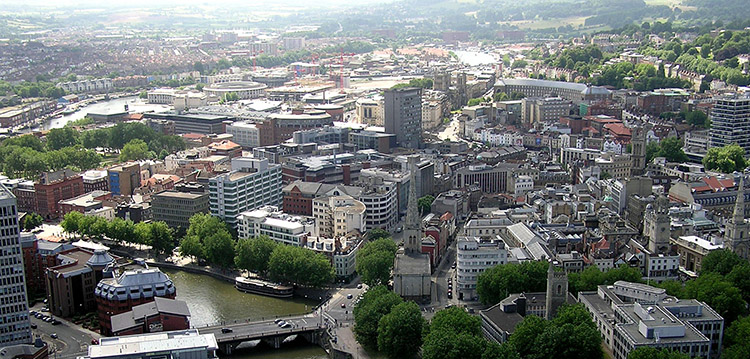18 May – 29 August 2016 The Architecture Gallery, RIBA (Entrance is free) At Home in Britain: Designing the House of Tomorrow re-examines how we live and showcases thought-provoking ideas for future housing design. Taking the cottage, terrace and flat as a starting point, six contemporary architecture practices from Britain, the Netherlands and France have been newly commissioned to transform the three familiar typologies to reflect the way we live and work in the 21st century: Mecanoo
Edouard François
Jamie Fobert Architects
Mӕ Architects
vPPR
Studio Weave
Using material from the RIBA Collections as stimulus, the architects will celebrate and critique vernacular housing of the past and explore ideas of affordability, communal living and housing density today. The new work will be displayed alongside photographs, books and drawings from the collections. The RIBA exhibition is in partnership with a three-part BBC FOUR series, Dan Cruickshank: At Home with the British, which explores the historical development of the British home. Each episode will feature a housing type: the terraces of Toxteth in Liverpool, the high-rise towers of Bow, East London and the cottages of rural Stoneleigh in Warwickshire. Marie Bak Mortensen, RIBA Head of Exhibitions said: “This exhibition offers a platform for creative thinking about the way we live now. Through their responses to trends in housing, from connectivity to affordability, the six featured practices will be both shining a light on intriguing items from RIBA’s collections and creatively reimagining some of the housing typologies that are part of the fabric of our lives and our environment.” Architects Jamie Fobert and Edouard Francois have been invited to redesign the cottage as an affordable contemporary housing solution to rival the developer-driven, mass-produced suburban housing aimed at first- time buyers. Historically, the cottage has been the archetypal low-cost housing. Self-built, using local building materials one third of Britons were listed as ‘cottars’ in the Domesday book. Through the RIBA Collections the exhibition highlights how urbanisation led to the cottage being idealised as a middle class fantasy of a country idyll, with its aesthetic being utilised in the Garden City movement and the design of the urban semi. The contemporary commissions will explore the relevance of the cottage today in light of the need to protect our rural landscape and avoid urban sprawl. Nearly one third of people in Britain today live in a terraced house and in 2014, 14% of us (4.2 million people) worked from home. Mӕ Architects and vPPR have been commissioned to reflect on how architecture affects our relationships with our neighbours and to reimagine terraced housing to accommodate contemporary live/work patterns. Their proposals will be informed by drawings and photographs from the RIBA Collections, illustrating the development of the terraced house in Britain from the grand Regency terraces to the largescale building of brick terraces, including back-to-back and court dwellings. Streets of these Victorian terraces were built to house factory workers during the Industrial Revolution and blurred the boundaries between colleagues and neighbours. Studio Weave and Mecanoo have been commissioned to consider how our future flats could answer the social opportunity of increased communal living, by rethinking conventional social groupings and the use of shared spaces. How can we challenge preconceived ideas of communal living and co-housing? RIBA Collection material selected by the commissioned architects as part of their research will be displayed alongside other curated collection material, including the original designs for the Isokon Flats in Hampstead, interior photographs of Denys Lasdun’s Hallfield Estate in its recently completed form, Arne Jacobsen’s designs for St Catherine’s College Cambridge, Peter Cook’s competition design for housing on Roosevelt Island, New York, and original photographs by John Donat, Edwin Smith and Tony Ray-Jones. The exhibition is co-curated by Anna Holsgrove, Curatorial Exhibitions Manager and Justine Sambrook, Curator of Photography at RIBA, and designed by Jamie Fobert Architects. It will be accompanied by a series of talks and events. ENDS Notes to editors: 1. For further information about the exhibition contact Beatrice Cooke in the RIBA press office: beatrice.cooke@riba.org; 020 7307 3813. For further information about the BBC series Dan Cruickshank: At Home with the British contact Sarah Hall in the BBC Press Office: sarah.hall1@bbc.co.uk 2. Press images can be downloaded here: https://riba.box.com/s/5atobcwucm77jnmu7b1vbihcxn6w16e3 3. The Architecture Gallery at RIBA is open from 10am – 5pm Monday to Sunday and until 8pm every Tuesday. Free entrance. RIBA is at 66 Portland Place, London, W1B 1AD. Nearest tubes are Oxford Circus, Regent’s Park and Great Portland Street. The exhibition is part of a RIBA season of wide ranging events and workshops, designed for all ages and experience levels. For further information go to www.architecture.com/whatson The Architecture Gallery opened in February 2014 in the RIBA’s Grade II* listed Art Deco HQ. Through regular, free exhibitions that explore the past, present and future of our built environment the gallery programme will help visitors discover and explore architecture. The gallery offers the opportunity for the RIBA to display its world class collections contained in the British Architectural Library. 4. Jamie Fobert Architects (Cottage) Jamie Fobert Architects have significant experience in housing design, having been nominated for the RIBA house of the year award four times. JFA are currently restoring Kettle’s Yard House and Gallery, as well as designing the extension for Tate St Ives. This portfolio of residential work combined with a sound knowledge of the arts sector is why they have been selected to participate in the exhibition. Maison Edouard Francois (Cottage) Edouard Francois is a renowned Parisian architect known for designing French social housing and sustainable architecture. His approach is both radical and contemporary, whilst remaining respectful to history. The cottage has been romanticised across Britain more than anywhere else. Asking a French architect to reimagine this historic typology will allow fresh insight into the possibilities of the cottage for the 21st century and make comparison to similar approaches and challenges in France. vPPR (Terrace) Founded by three women who met whilst studying at Cambridge University, vPPR have






